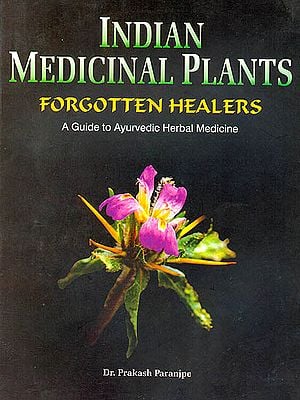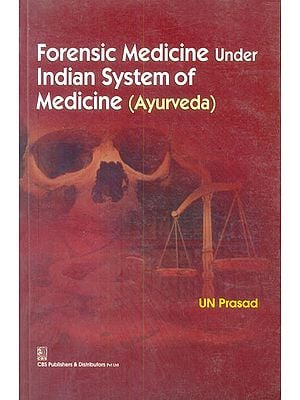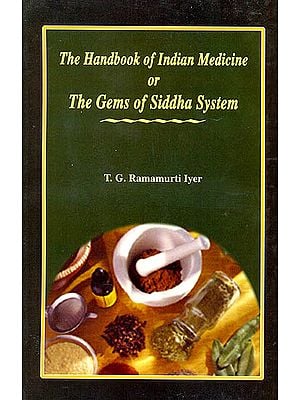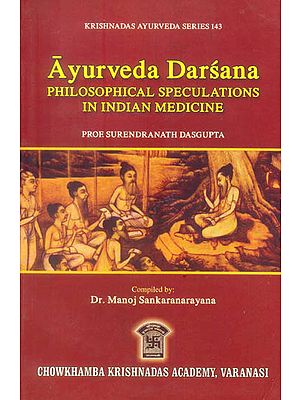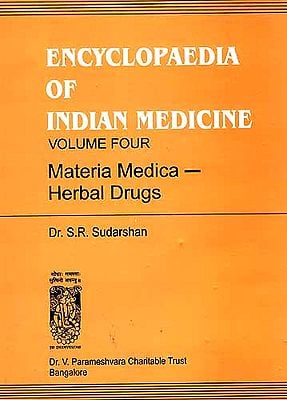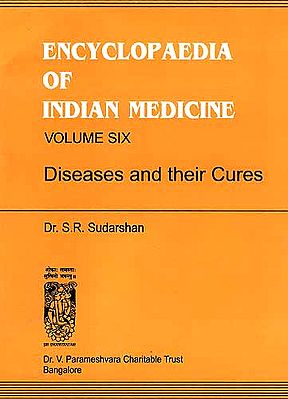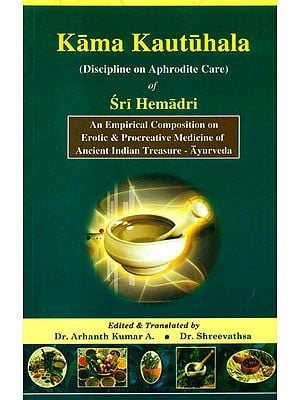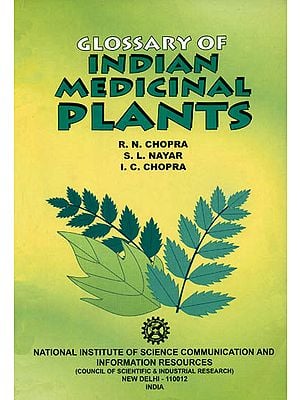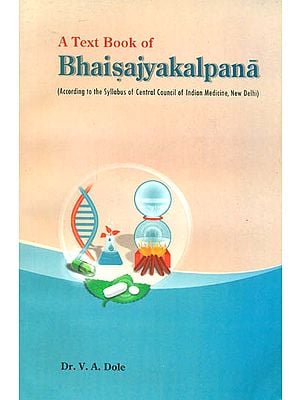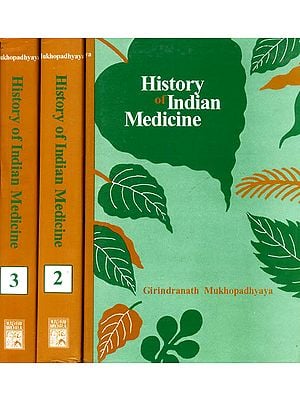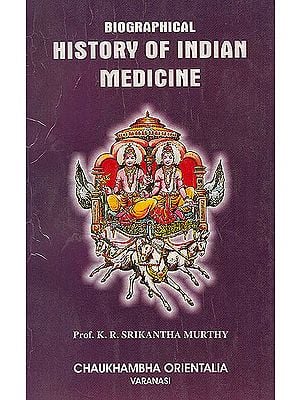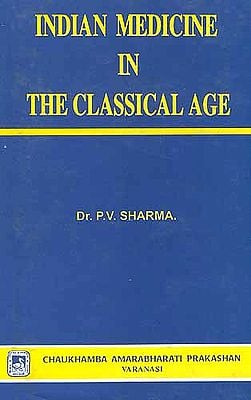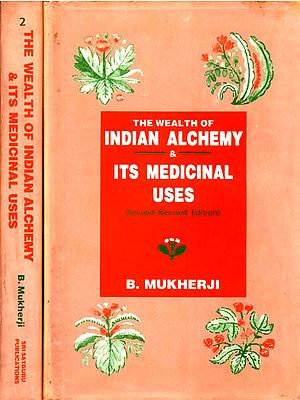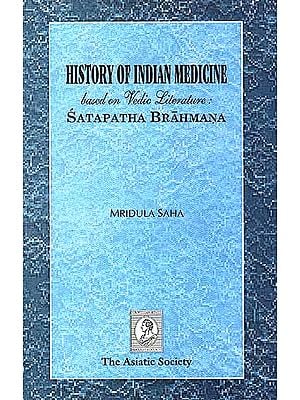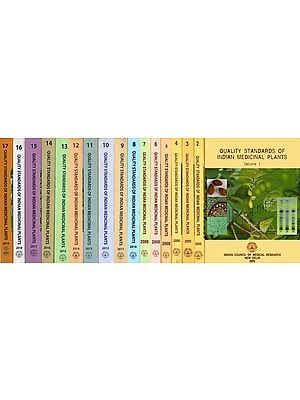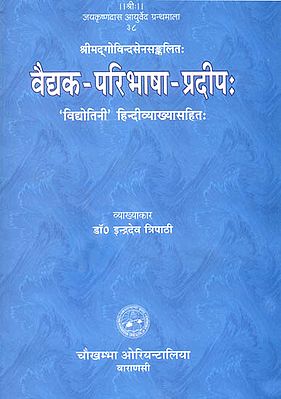The Art and Architecture of India Indian Medicine History
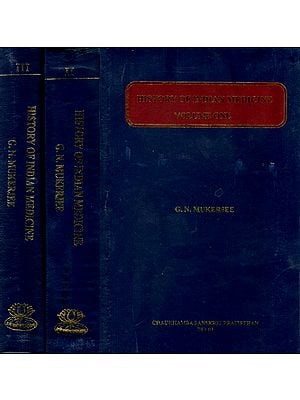
HISTORY OF INDIAN MEDICINE: (Three Volumes)
Ships in one-3 days
Notify me when this item is available
FOREWORD:
An adequate History of Indian Medicine has even so to be written, though the importance of the subject has been acknowledged by the eminent government. Professor Max Neuburger of the Academy of Vienna records the stance that "the medicine of Indians, if it does not equal the best achievements of their race, at to the lowest degree nearly approaches them, and owing to its wealth of knowledge, depth of speculation and systematic structure, takes an outstanding position in the History of Oriental Medicine. Thanks to the inexhaustible fount of Sanskrit Literature, its development can be traced in outline at any charge per unit from its primeval origins in empiricisms and theurgy to its height as a completed system of learning." (Neuburger: History of Medicine, translated by Playfair Vol. I, p. 43.) It needs no elaborate argument to plant that this "inexhaustible fount" requires for its complete exploration an army of scholars; and till this has been achieve, summaries of the history of Indian Medicine must keep to be incomplete and bitty. We cannot consequently express surprise when were find that Neuburger in his neat work devotes just 18 pages to the subject, while Professor Buck of Columbia in his work on "The Growth of Medicine from the earliest times to the cease of the 18th century" contents himself with a few paragraphs which occupy 8 pages merely. In these circumstances, it is no wonder that the topic is not even mentioned in the vivid lectures on "The Evolution of Modern Medicine" delivered by Sir William Osler at the Yale University in 1913.
I have stated enough to establish the importance of the work undertaken by Dr. Girindranath Mookerjee. In 1909 the Academy awarded him the Griffith Memorial Prize for the encouragement of advanced study in Scientific discipline and Letters, in his valuable theses thesis dealing with the Surgical Instruments of the Hindus. This piece of work has already been published in ii volumes and its merits take been widely recognised. In 1911 the University again awarded the Griffith Prize to Dr. Mookerjee for his exhaustive thesis entitle "Notices, Biographical and Bibliographical of the Indian Physicians and their works on Medicine." This was followed in 1913 by a thesis on "the Science of Medicine in the Atharvaveda," which participated in the accolade for that year. The materials thus collected are of immense value and will occupy several volumes.
The outset volume of the History of Indian Medicine is now offered to the public.
It is at present many years since I undertook and completed the book. I submitted it as a thesis for the Griffith Prize for original enquiry: "Notices Biographical and Bibliographical of the Ayurvedic Physicians and their Works on Medicine." It was commended and the prize was awarded in 1911. I regret that then long a fourth dimension has elapsed in the publication of the book. During the concluding few years at that place take been advances in the report of history of medicine. Consequently, in this edition, not just has revision been exhaustive, simply many portions have been entirely recast and largely re-written. While this volume represents data and conclusions drawn from individual enquiry, information technology is at the aforementioned fourth dimension largely indebted to the works of others. References have been given to all the authorities and original sources every bit far equally possible.
I may at in one case disclaim all pretensions to scientific treatment of my bailiwick. I crave the indulgence of the readers for many shortcomings of the work. The author is non main of his time, and the incessant engagements of his practice go out little leisure for literary works.
To render the finding of any particular field of study easy to the reader, I take enlarged the Table of Contents. The full general index, which will be given at the end of the work, will facilitate references.
Before last this preface, I tender my thanks to the Vice-Chancellor of Calcutta University, Sir Asutosh Mookerjee, for aid of the utmost value in the preparation and publication of this volume. In fact, it might have been deferred much longer if had not secured his valuable assistance. I have also to limited my gratitude to him for his kindness in writing a foreword to this volume.
| Folio | ||
| Foreword | (vii) | |
| Preface | (ix) | |
| Sanskrit Alphabets Transliteration Nautical chart | (x) | |
| Introduction | ||
| The number of Sanskrit medical works. Brief survery of the work done past scholars. The neglect of Europeans. Importance of the study of History of Indian medical literature. Every affiliate has equally its heading the name of the physician whose life is described. Information technology is an index of Sanskrit medical works. Study of history of medicine in Europe. Notes of some works on the history of medicine. Refuse of historical research in Europe. Recent publications. The written report of History of Medicine in England. Medical Biographies and History. Revival of the study in India. Translation of Susruta Samhita. Sanskrit medical books. A medical man should have broad civilization. Recommendations of the Calcutta Academy commission for the establishment of Chairs of History of medicine and Pharmaeology. The importance of the study of Medical history: 1. Best method of popularising scientific studies; 2. Educational attribute; 3. Necessary for inquiry iv. Attractions for the study; 5. Useful pastime for busy practitioners. Sidelines of physicians. The utility of study: I. Origin of medicines: (i) Gods, (ii) Animal instructors of medicines; 2. Accounts of obsolete customs: (i) Visakanya or poison-girls, (two) Suka-dosa, (iii) Temple Slumber; III. Therapeutic measures: (i) The immovable apparatus and rattan cane splints in fractures, (ii) Massage, (iii) Hypnotism, (iv) Exercise; IV. Indigenous drugs; 5. Identification of diseases: (i) Leprosy, (2) History of Cholera or Visucika, Small-Pox, Vaccination, Inoculation and vaccination, Sitala, Syphilis. The methods of popularising the study of medical history: 1. Museums, 2. Exhibition, 3. Library, four. Pictures. | one-121 | |
| Appendix | ||
| Notices, Biographical and Bibliographical, of the Ayurvedic Physicians and their Works on Medicine: | 122-123 | |
| | ||
| Brahma The originator of the Science of Life. His Ayurveda consisted of Salya Tantra or Major Surgery, Salakya Tantra or Minor Surgery, Kaya Cikitsa or Medicine, Bhutavidya or Demology, Kumarabhrtya the Science of Paediatrics, Agada Tantra or Toxicology, Rasayana or the Science of Tonics and Vajikarana Tantra or the Science of Aphrodisiacs. The Divine origin of medicines in Egypt, Greece and other ancient countries. Mss. Of Ayurveda. References to Brahma. His works. Formula attributed to Brahma. His disciples. | 125-137 | |
| VisnuThe Preserver; the Sun-god. References to Visnu as a physician. Formulae ascribed to Visnu. | 138-145 | |
| Siva The propounder of the Science of Medicine. Rudra, Tryamvaka. Who is Rudra? His names. His works. References to Rudra as a physician in the Vedas. Formulae ascribesd to Siva. Serpent worship. Snake the symbol of wisdom. | 146-192 | |
| | ||
| Bhaskara or the Sun. Bhaskara a doctor in the Rgveda> Nascency of the Asvin twins. Bhaskara is the god of the eyes. Books and Formulae ascribed to him. References to Surya and Savita in the Rgveda. | 193-204 | |
| Indra as described in the Vedas and Puranas. He learned Medicine from the Asvins. His disciples. Atreya and Bhardvaja, Reference to Indra equally a physician. Incidents of Indra's life. The hymns to Indra in the Rgveda. The skill of Indra every bit a physician. Formulae ascribed to him. | 205-214 | |
| Kartikeya. His works. | 215 | |
| Sarasvati equally river and as the goddess of learning. Bharati and Ila. Formulae ascribed to Sarasvati. The hymns to Sarasvati in the Rgveda. | 216-221 | |
| Raka, Sinivali, Gungu and Anumati. | 222-223 | |
| | ||
| Daksa or the Prajapati. He is the creator of living existence. Genealogy of the teacher of medicines. Daksa and Aesculapius. Formulae ascribed to Daksa | 224-226 | |
| Yama The ruler of the dead. His graphic symbol in the Veda and the Mahabharata. Books written by him. Hymns to Yama in the Rgveda. | 227-229 | |
| Varuna The god of the ocean. Mitra and Varuna in the Rgveda. Varuna's medicines. Varuna and Oannes the Sumerian deity. The epithets of, and hymns to Varuna in the Vedas. | 230-233 | |
| The Asvini Kumara the twin sons of Vivasvat and Saranyu. Nasatya and Dasra. Descriptions of the Asvins in the Rgveda. Resemblance to Chiron the Centaur, and to Castor and Pollux. The Mitanian Gods. Incidents of their life. Hymns to Asvins in the Rgveda. References to Asvins as medical men in the Rgveda, Caraka Samhita, and Susruta Samhita. The epithets applied to them in the Rgveda. Their works. Formulae ascribed to the Asvins. | 234-271 | |
| | ||
| KasyapaReference to Kasyapa. Formulae ascribed to him. | 272-273 | |
| Kasyapa The Elderberry. References to him in medical texts. Formulae ascribed to him. His works. | 274-279 | |
| Soma in the Rgveda. Identification of the Soma found. Manufacture of Soma juice. Properties ascribed to Soma juice. Soma as god. His divine powers. His wives. References to Soma as a god in the earlier hymns in the Rgveda. The dual graphic symbol of Soma. The hymns in the Rgveda which treat of Soma. | 280-290 | |
| Budha | 291 | |
Title: HISTORY OF INDIAN MEDICINE: Book Ii
| Page | ||
| Preface | (vii) | |
| Sanskrit Alphabets Transliteration Chart | (eight) | |
| Introduction | ||
| The present state of Ayurvedic study. The Ayurvedic Committee of Bengal; its questionnaire. The reply sent by the author. Description of the work done by the Government to resuscitate noesis in Ayurveda; the traditional system of training of the Kavirajas in Bengal; Lord Minto's recommendations. The establishment to the Sanskrit College in Calcutta; the pedagogy of medical science therein. Dr. Tytler and the Native Medical Establishment. Pandit Madhusudana Gupta. Lord William Bentinck appoints a committee to revise medical education in Bengal. Macaulay's famous Minute. Dr. Grant and Dr. Duff. Foundation of the Medical College. Abolitionism of Native Medical Institution. Drs. Bramley, Goodeve, and Madhusudana. Study of European medical science. Restoration and Development of Ayurveda:- Its demand; Demand for medical men in rural areas; Trained native doctors, Hospital Administration, and Ayurvedic physicians. Its popularity. Methods of restoration:-Establishment of a Central College of Ayurveda; Hospital, Library, Translation of Sanskrit books, Editions of suitable text books, Exhibitions, Popular lectures, Therapeutic Gardens, and Museums. The establishment of pedagogy institution, Tols, Hospitals. The location and scheme of the Fundamental College and Infirmary; Qualification of the students and the question of their accommodation in the existing medical schools. The medium of instruction-English language for the present and colloquial afterwards. Ayurveda is not a bourgeois science. Its literature; Status of the Ayurvedic practitioners; Recognition of certificates granted by the Kavirajas; Registration of qualified practitioners. Drugs, their collection, standardisation and sale. Duty of the Universities, District Boards, and Municipalities. | 1-30 | |
| Oral evidence of the Author | 31-37 | |
| Report of the Ayurvedic Colleges Amalgamations Special Commission. | 38-44 | |
| Appendix I Memorandum of Association of Ayurveda Mahavidyalaya, Rules-Constitution, etc; Extracts from the Proceedings of the Governing Bodies of the iii Ayurvedic colleges. | 45-56 | |
| Appendix Ii The questionnaire of the Commission appointed by the Government of Madras on the Indigenous medicines. | 57-59 | |
| Bibliography of Ayurvedic Books Full general Medicine, Botany Materia Medica and pharmacology, Surgery and Midwifery, History of Materia Medica and other Cognate Subjects. | 61-74 | |
| Catalogues | 75-76 | |
| List of Abbreviation | 77-78 | |
| | ||
| Agni His functions, Purohita, etc. His relationship with the other gods. His parents. Amantha and Prometheus. His appearance. Forms of Agni. His power. Divine honours. Agni'due south chariot and equus caballus. His votaries. Agni as a physician. His character. Hymns to Agni in the Atharvaveda. The seven tongues of Agni | 79-88 | |
| Vata and Vayu The Wind God. Hymns to Vata and Vayu. Authorship Vayu Purana | 89-94 | |
| | ||
| Vrhaspati The same every bit Brahmanaspati-The Lord of Prayer. His parentage. His works-Police force books and astronomical tracts. A prescription of Vrhaspati for promoting bulkiness in the Bower MS. Reference in Cakradatta, and Ramayana. Relationship with other gods. His acts. Relationship with the worshippers. His attributes, weapons and sons. Hymns to the god in the Rgveda and Atharvaveda. | 95-105 | |
| Usana or Sukracarya or Kavya The Preceptor of the demons. His sons, and daughter Devayani; Her story. His works. A prescription of Usana. | 106-107 | |
| | ||
| Agastya His birth and life. His acts. His books. The formulae ascribed to Agastya. | 108-116 | |
| Cyavana His marriage with Sukanya. The legend of Cyavana and Asvins. Formulae ascribed to Cyavana. | 117-121 | |
| Bharadvaja His parents. Went to Indra to learn medical science for the good of the people. Reference to him in the Ayurveda books. Authorship. Formulae attributed to him. Genealogy. | 122-129 | |
| | ||
| Bhrgu The ten groovy Seers,- the mental sons of Brahma. His wife and son. Genealogy. Bhrgu's acts. | 130-132 | |
| Narada A Devarsi. His re-nativity as Upavrahana. His books. The formulae ascribed to him. | 133-136 | |
| Marici One of the Saptarsi. Reference to him in the Caraka Samhita. | 137 | |
| Kaca Learned the science of restoration of the dead to life from Sukracarya. Devayani'due south curse. Formulae. | 138 | |
| | ||
| Visvamitra Learned medicine from Bharadvaja. He is a composer of Vedic hymns. Conflict betwixt Visvamitra and Vasistha. His parents. The story of Hariscandra. Reference to Visvamitraas a medical author in Navanitaka, Nivandhasangraha, Vyakhyakusumavali, Vrnda Madhava, Tattva Candrika and Bhava Prakasa. Susruta was his son. Genealogy. | 139-145 | |
| Vasistha His parents. Story of Kalmasada. His wife. Reference to him in the Caraka Samhita and Trimalla'southward Yogatarangini. His books. Hymns attributed him. Formulae. | 146-149 | |
| Angira A Prajapati. His sons. As a law-giver and astronomer. | 150 | |
| Vamadeva Reference to him in the Gadanigraha, Aitareya Samhita and Vamadeva Samhita | 150 | |
| Sanatkumara His book Sanatkumara Samhita is one the handling of eye diseases. | 151-152 | |
| | ||
| KamadevaHis wife-Rati. Rebirth equally Pradyumna. Formulae. | 153-154 | |
| Pulastya Progenitor of the Raksasas. | 155 | |
| Jamadagni A Bhargava. His sons. Parasurama killed Kartyavirya. His remedy for the growth of hair. Reference in the Caraka Samhita and Atharvaveda. | 156 | |
| Gotama Reference in the Caraka Samhita and Vyakhyamadhukosa. His wife Ahalya, and sons Satananda. Asita Gotama. | 157 | |
| Garga And Gargya There were many Gargas. Reference to Garga equally a medical author in Prayogaratnakara and Matsya Purana. His Books. | 158 | |
| Vyasa His parents. The arranger of the Vedas. His works-Brahmasutra. Founder of a school of Vedanta. There were many Vyasa. Reference to him as a medical author in Sarvangasundari. His work--Gajalaksana. Formulae. Vadarayana and Vedavyasa. His date. Disciples of Vyasa. | 159-162 | |
| Pariksi Maudgalya Reference in theCaraka Samhita. | 163 | |
| | ||
| Dhanvantari Origin of the medical scientific discipline. Genealogy. His birth-the story of Galava. Theory of 2 Dhanvataris. His disciples. Formulae. His works. Story of Manasa in the Brahmavaivarta Purana. Taksaka and Kasyapa | 164-183 | |
| Nimi Potency on diseases of the heart. Reference in the Susruta Samhita and Caraka Samhita. Mithi Janaka, Nimi, Videha and Maha Videha. Genealogy. Books Quotations from Nimi. Formulae. | 184-201 | |
| Salihotra Knowledge of Veterinarian science in Ancient Republic of india. Handling of cattle, horse and elephant. Post-mortem examination of dead animals and cadaver in Kautilya's Arthasastra. his work on the Treatment of Horse. Relation of Salihotra to Susruta. Hayaghosa. Analysis of contents of Salihotra. Reference. Comparing of cognition of the art in Ancient India, and in Europe, a century back. | 202-234 | |
| PalakapyaOrigin of the scientific discipline of handling of elephants. His work-Hasti Ayurveda. Analysis of its contents. List of sages invited by Romapada, Rex of Campa to learn the Scientific discipline. | 235-252 | |
| Ravana The male monarch of Lanka. His parents. His medical works-Editions. | 253-255 | |
| | ||
| Atri A Prajapati. His married woman Anastiya gave Sita an ointment. His sons. | 256 | |
| Atreya Punarvasu Learned medicine from Indra. His half dozen disciples. Analysis of Atreya Samhita. His books. Reference. Formulae. | 257-264 | |
| Krsna Atreya The identity of Krsna Atreya. Quotations from his works. Formulae | 265-278 | |
| Dattatreya His works. | 279-280 | |
| Hiranyaksa Reference in the Caraka Samhita, Vyakhyamadhukosa, and Cakradatta Kausika. | 281 | |
| Vadisa | 282 | |
| Sankrtyayana | 283 | |
| Saraloma | 283 | |
| Kapya | 284-285 | |
| KankayanaReference Formulae. | 286-289 | |
| JavalaHis work | 290 | |
| Kumarasira Bharadvaja. Reference in the Caraka Samhita. | 291 | |
| Rajarsi Vamaka | 292 | |
| Rajarsi Varyovida | 293-294 | |
| Saunaka. Bhadra Saunaka Reference. His works | 295-298 | |
| Kanada His Works. Founder of Vaisesiki organisation. Editions of Nadivijnna. Translations. | 299-301 | |
| Maitreya | 302-303 | |
| Sakunteya and Sakuneya | 304 | |
| Paila | 304 | |
| Karatha | 305 | |
| Jajali | 305 | |
| | ||
| Male monarch Nala His life. Versed in the science of Cookery. His books. | 306-307 | |
| Nakula and Sahadeva The Pandava. Treatment of horses and cows. Their medical works. Analysis of contents of Asvacikitsa past Nakula | 308-311 | |
| Markandeya His parents. Longevity. The Amrta oil in Bower MS. His works. | 312-314 | |
| Asvalayana Writer ofSrauta Sutra | 315 | |
| Sandilya Writer of Bhakti Sutra | 315 | |
| Sankhya-Kapila The legend of Sagara Colebrooke'due south opinion. The existing Sankhya sutras are spurious. Teachers of the organisation. Reference in theCaraka Samhita. Translation of the Sutras. | 316-317 | |
| Devala A Vedic Rsi. | 318 | |
| Dhaumya The family priest of the Pandavas. | 318 | |
| Kaundinya Kaundilya is a error of the scribes. | 318 | |
| AsmarathyaDisciple of Vyasa. | 319 | |
| Sarkaraksa | 319 | |
| Varksi Kaikeseya Lokaksa, Paingi, Vaijavapi Maimatayani and Abhijit are sages mentioned in the Caraka samhita just otherwise unknown | 319 | |
| KatyayanaThe Varttika-Kara. His works. His age. | 320 | |
| Galava The legend of Galava and Visvamitra. Galava and the birth of Dhanvantari. | 320 | |
| Vaikhanasa and Valakhilya Munis Reference in the Vrhat Ramayana and Gada nigraha. Formulae of Brahmarasayana. | 321-322 | |
| Kapisthala Not Kapinjala as in some editions of Caraka Samhita. | 323 | |
| Parasurama The Bhargabha. Reference in the Caraka Samhita and Hasti-Ayurveda. | 324 | |
Championship: HISTORY OF INDIAN MEDICINE: Volume THREE
| Page | ||
| Preface | (seven) | |
| Sanskrit Alphabets Transliteration Chart | (ix) | |
| Introduction: | ||
| Comparative Medicine Information technology can reveal the state of medical knowledge. | ||
| Comparative Philology and Comparative Mythology Rosetta stone. The tri-lingual coneiform inscriptions of Darius and Xerxes. Sandrokoptos. Labour of Gnaw-ollion, Rawlinson, Grotefend, Burnouf, Jones, Bopp. | ||
| In Medicine Egyptian papyri; Pali and Sanskrit Buddhist literature; Greek and Roman medicine; Veda and Zend; Tibetan Tangyur and Kangyur, Arabic and Western farsi, Tamil and Singalese Medicine in Java, Burma, China and Ceylon. The necessity to learn classical and modern European languages. Folk medicine. The unlike systems of medicine, and their classification. Empirical noesis. Indian system is not a 'solitary organization' but has much in common with the other systems-Persian, Mesopotamian. The utilise of such a study. Revival of Hindu medicine--Journal of Ayurveda. Text-books. | ||
| Examples of the use of the comparative method-Surgical instruments and operations, Forceps, Catheters, Parasites, Midwifery forceps, Kalaya-Khanja, Inoculation of Small-pox and vaccination, the Hippocratic oath; Ant's caput as suture fabric, Glass knife, Leeches, Autopsy and The snake symbol. | ane-9 | |
| | ||
| AgnivesaDisciple of Atreya Punarvasu, author of Agnivesa Tantra. References to and quotations from it. Formulae. His works. MSS. Commentary. | 13-20 | |
| Bhela or Bheda Bhela Samhita. Bhaluki Samhita- a surgical treatise. Quotations from Bhaluki and Bheda. MS. Of Bhela Samhita in Tanjore Catalogue. Formulae of Bhela and Bhaluki. | 21-37 | |
| Jatukarna A disciple of Atreya Punarvasu. Jatukarna Samhita or Tantra. Quotations from it. Formulae. | 38-41 | |
| Harita I, or Vrddha Harita Pseudo-Harita or Harita Two. Quotations from Harita Samhita. Formulae. | 42-50 | |
| Ksarapani Ane of the six disciples of Atreya Punarvasu, Ksarapani Tantra. Quotations from it. Formulae. | 51-55 | |
| Vrddha Parasara or Parasara I Parentage. Parasara Samhita. One of the viii original authors of medical text books. Table of teachers and disciples of Vedic studies. | 56-57 | |
| Parasara II One of the disciples of Punarvasu Atreya, author of Parasara Samhita. Quotations from it. Takrakalpa. MS. Formulae. | 58-61 | |
| | ||
| Vrddha Susruta or Susruta I Susruta Tantra and Susruta Samhita. Dhanvantari and Susruta. Historic period of Susruta- Its uncertainly. Two period of Hindu medicine. Absurdity of Haas' theory, Redaction-Nagarjuna, Candrata. Laghu Susruta and Susrutasara. Commentaries. Editions, Translation, Quotations from Susruta Tantra. Its eight sections. Index of Susruta Samhita-its six sections. Analysis of its contents. MSS. | 62-85 | |
| Aupadhenava Aupadhenava Tantra Non available. | 86 | |
| Aurabhra Aurabhra Tantra Non available. | 86 | |
| Puskalavata Ane of the earliest writers on Surgery. | 87 | |
| Karavirya A disciple of Dhanvantari-writer of a treatise on Surgery. | 88 | |
| Gopura-Raksita Disciples of Dhanvantari. Quotations. | 88 | |
| Vaitarana Disciple of Dhanvantari. Quotations. | 89 | |
| | ||
| Caraka Caraka Samhita its origin. Age of Caraka. Editions. Translations. The commentators of Caraka and their commentaries. His works. MSS. Of Caraka Samhita. The list of medical authors mentioned in it. | ||
| Drdhabala Identification of Pancanadappura. The last seventeen chapters of the Caraka Samhita- The arrangement of the chapters. B. C. Sengupta's view. The age of Drdhabala. - Hoernle'southward opinion. The authorship of the Caraka Samhita. Its MSS. Caraka is quoted in later on books. Analysis of the Caraka Samhita. Dr. Sirear's notes on it. Translation. The origin of medicine every bit narrated by Caraka. | 101-125 | |
| | ||
| Bhiksu Atreya The instructor of Jivaka. His books--Atri Samhita. Formulae in Navanitika. | 126-134 | |
| Sambavya Quoted in the Bower MS. Krtasambhava in the Kasyapa Samhita. | 135 | |
| Suprabha A royal sage, quoted in Bower MS. | 136-137 | |
| Vadvali Quoted in the Bower MS. | 138-139 | |
| Bodhisattva Sakya Muni. His life and cures. Formulae. | 140-141 | |
| Kasyapa, the younger Contemporary of Buddha. Kasyapa, the toxicologist, in the Mahabharata. The Kasyapa Pills. | 142-145 | |
| Jivaka Medico of Buddha. His parentage. His cures. Formulae. Life of Jivaka in detail. Quoted from Mahavagga, Hardy'south Transmission of Buddhism, Scheifner'due south Tibetan Tales and Oldenburg'south Buddha. | 146-189 | |
| Parvataka and Bandhaka | 190 | |
| Manibhadra A Buddhist Maha-Yaksa. Formulae. | 191-193 | |
| Mahavagga On Medicaments. An analysis of its contents. | 194-200 | |
| Vyadi | 201-202 | |
| Alambayana | 203 | |
| Ladyayana | 204-205 | |
| | ||
| Kharanada and Kharanadi- Quotations from their works. Formulae. | 206-212 | |
| Karala Bhatta | 213 | |
| Caksusyena | 214-217 | |
| Satyaki | 218-219 | |
| Patanjali His parentage-His works. Caraka and Patanjali. Patanjali and Nagarjuna. The Age of Patanjali-internal and external evidence. Quotations. | 220-225 | |
| Kapilavala | 226-227 | |
| Simhagupta | 228-229 | |
| Vagbhata Chronology. I'tsing'south remarks. Hoernle'southward opinion about his age-objections. I'tsing refers to Vagbhata II. Editions of Astanga Sangraha. Commentary. Analysis of its contents. Authors quoted in information technology. | 230-244 | |
| Psedo-Harita or Harita II Editions of Harita Samhita. Analysis of its contents. Goldstucker'south analysis. MSS. The medical Authors mentioned in information technology. | 245-254 | |
| Nagarjuna His life. His date. His works. MSS. Dialogue between Nagarjuna Rex Salivahana and Ratnaghosa in the Rasaratnakara. He is quoted by later authors. Formulae. | 255-274 | |
| | ||
| Rsyasrnga | 275 | |
| Ramacandra The Hero of Ramayana. His life. Opinion of Mr. B.C. Mukherjee well-nigh the identity of King Ramacandra and Ramaraja. Objections against it. Ramacandra Guha, writer of Rasendra-cintamani, Dhundukanatha and Dandakanatha. Who was Ramaraja? Rama Raya of Vijayanagara. Rama Raja of Kastha, the author of Rasaratnapradipa. | 276-281 | |
| Susena | 282-283 | |
| Astika | 284 | |
| Yajnavalkya | 285 | |
| Vatsyayana Author of Vastyayana Sutra. Its MS. Commentary by Bhaskara Nrsimha Sastri. Translations. | 286-291 | |
| Bhimasena Supasastra. Its MS. | 292-293 | |
| Mandavya | 294-295 | |
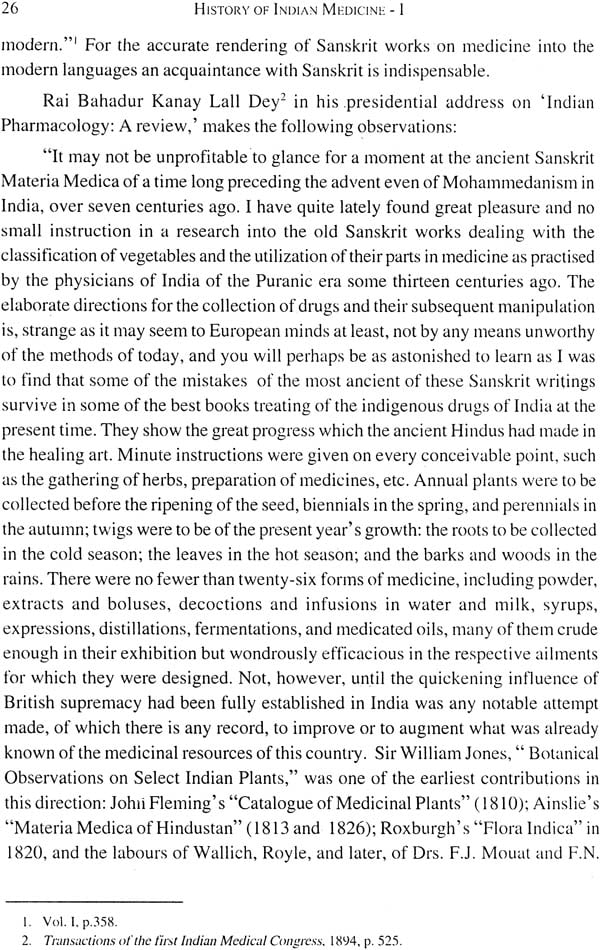
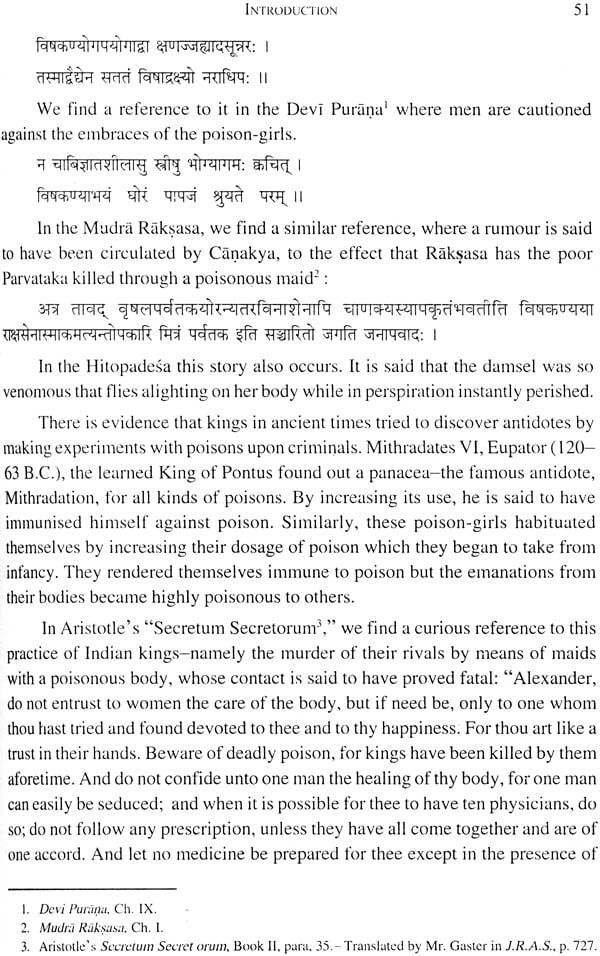
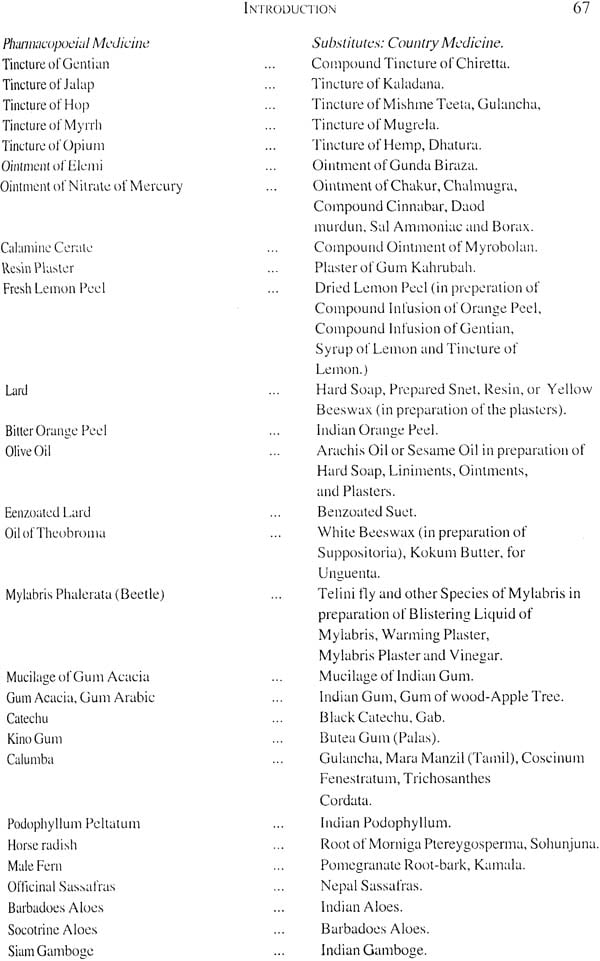
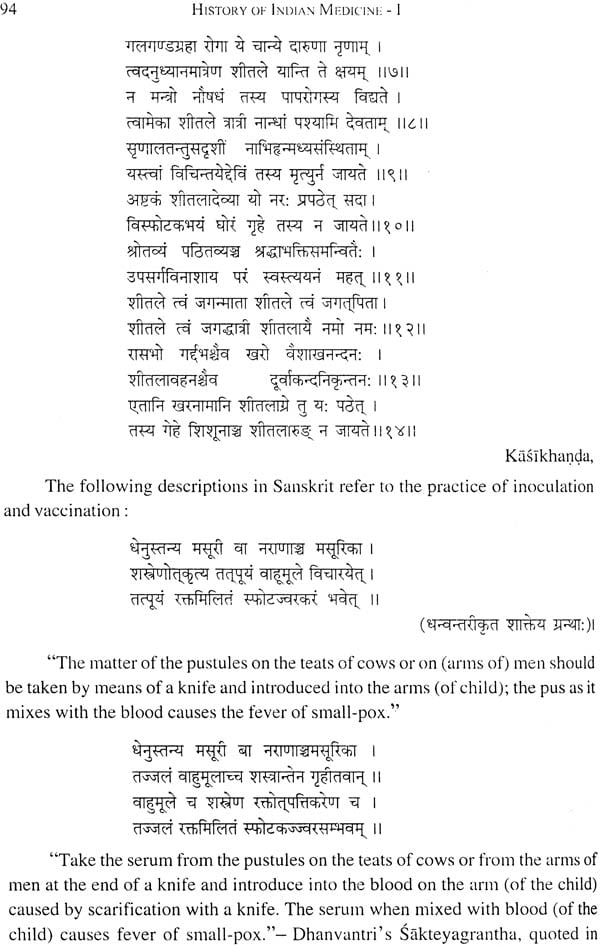

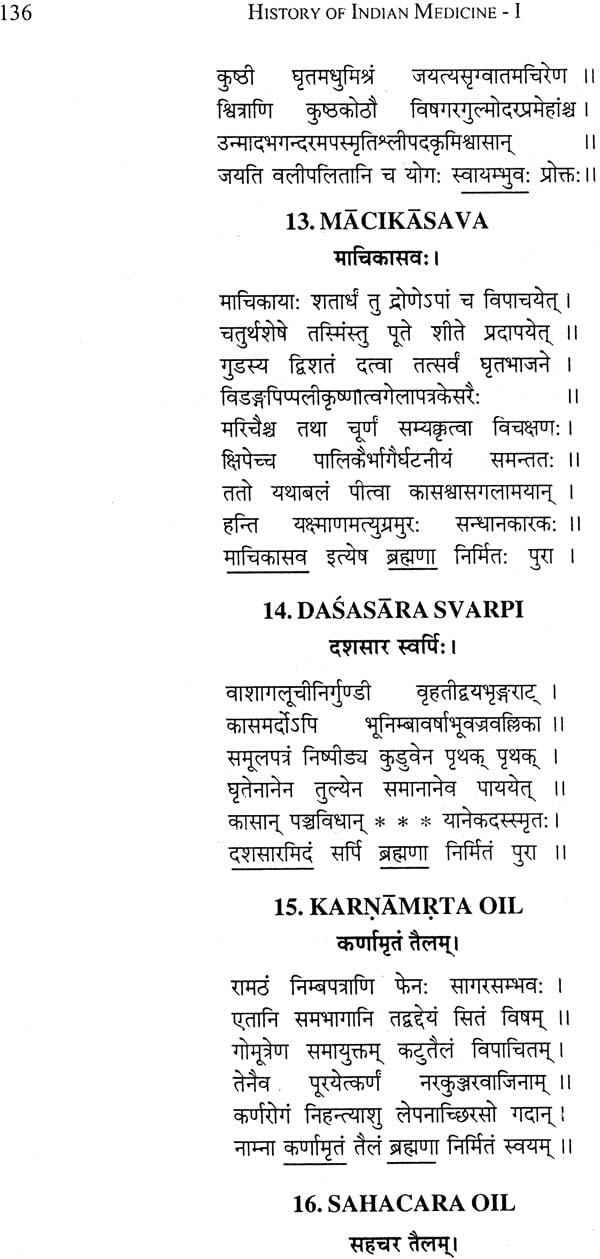
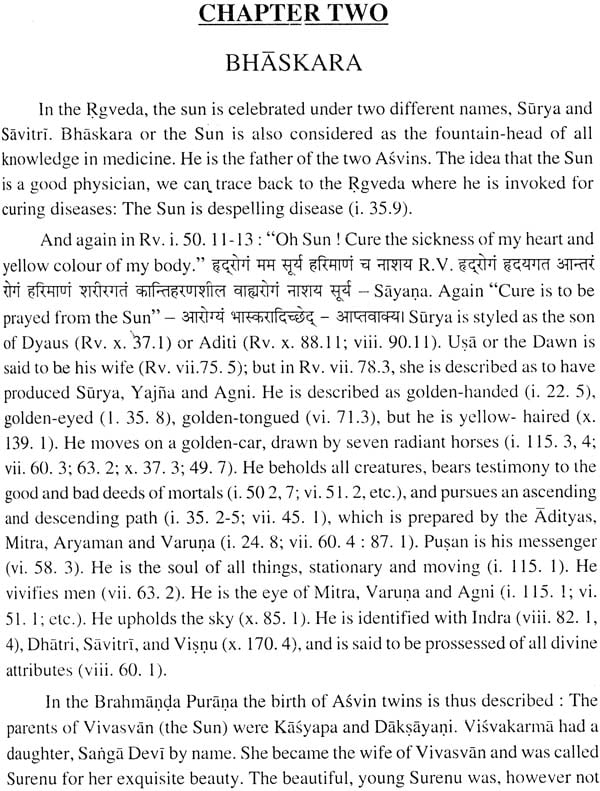
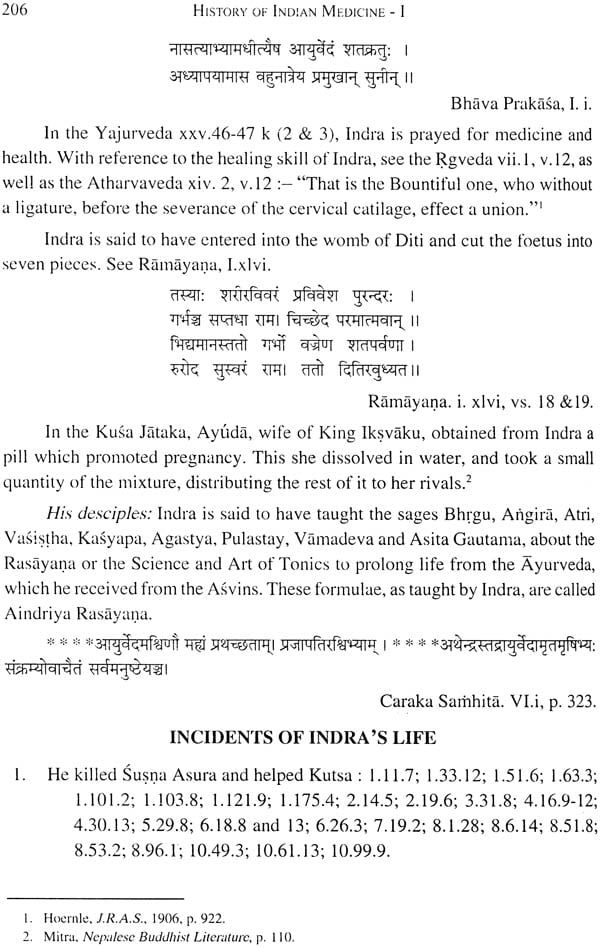
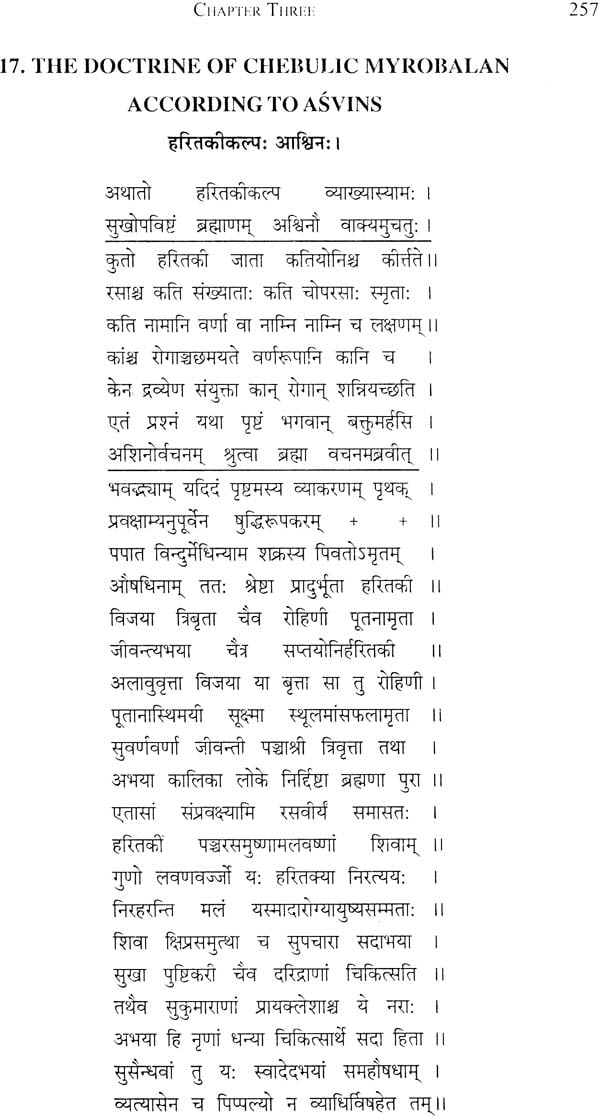
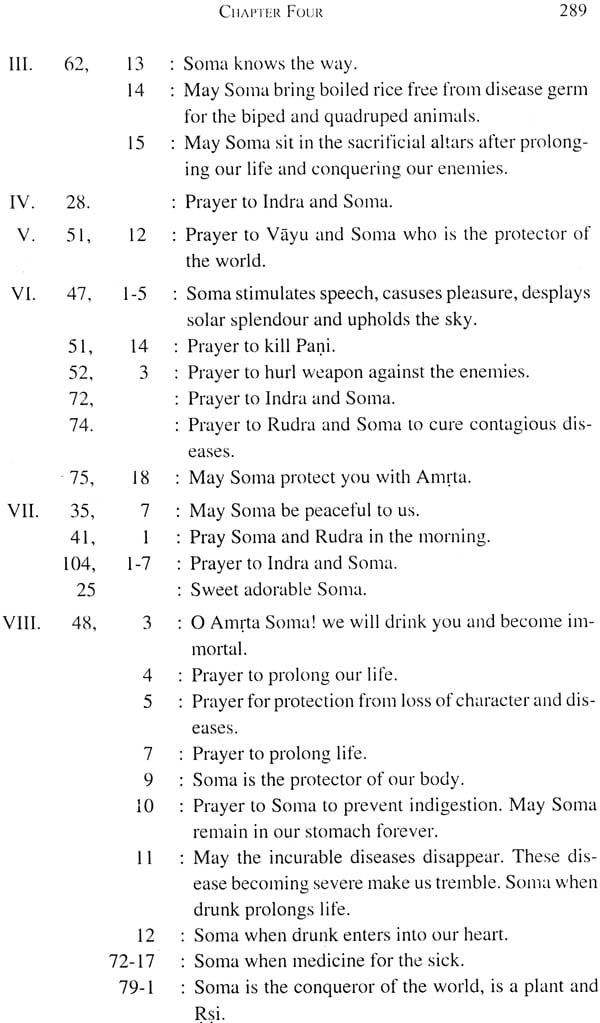
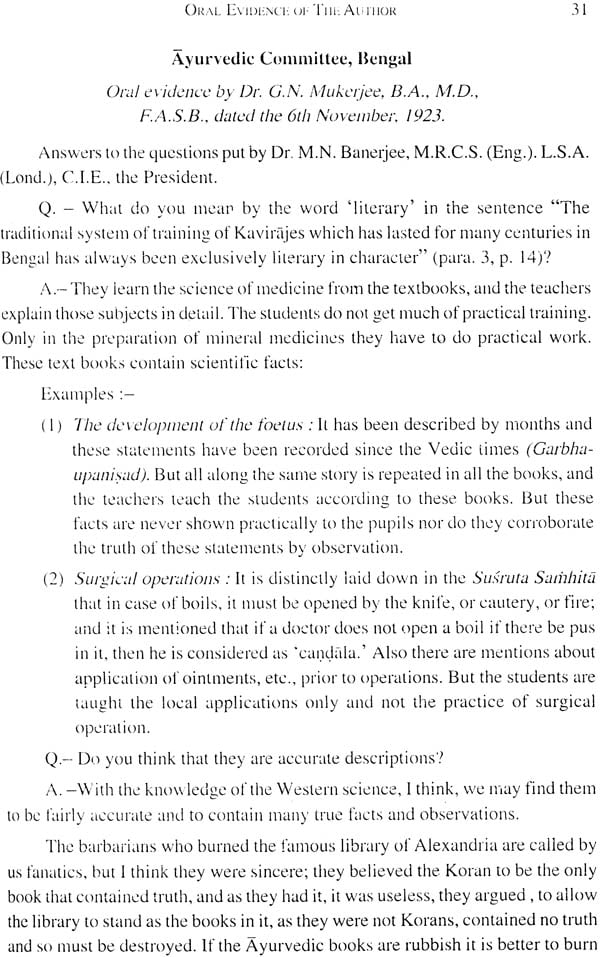
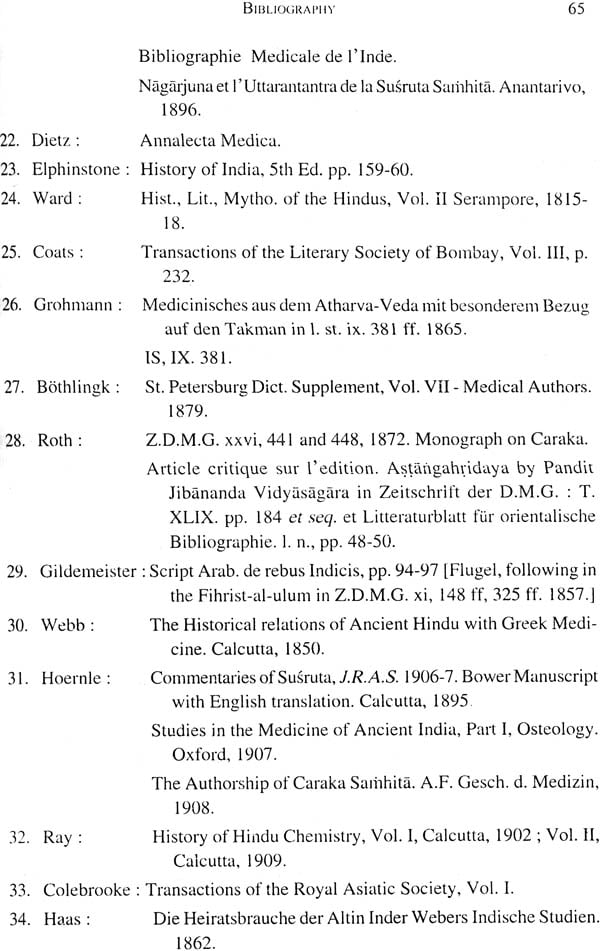
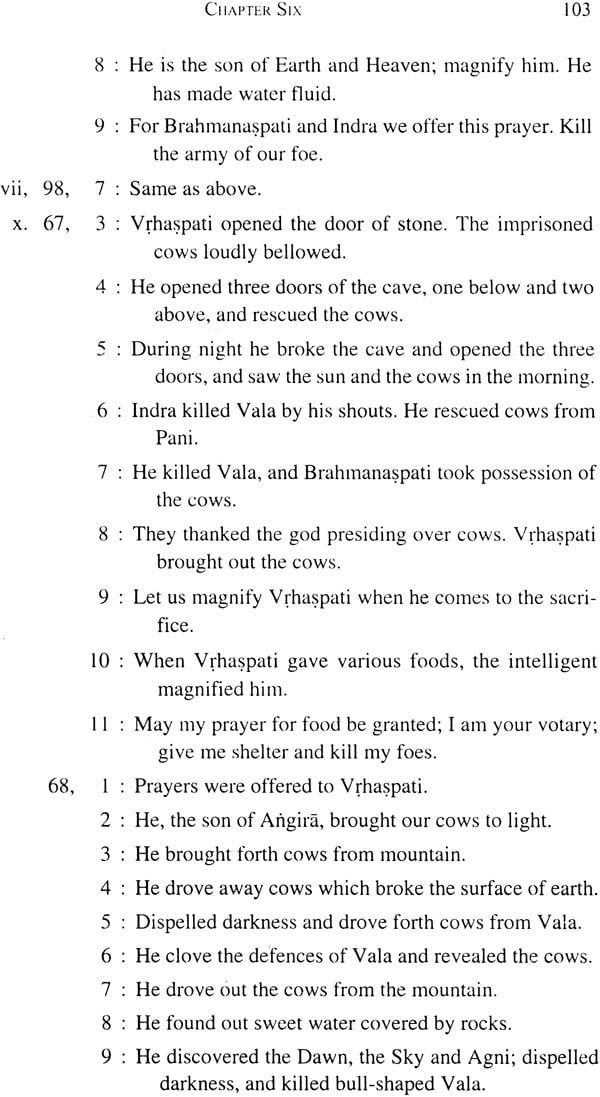
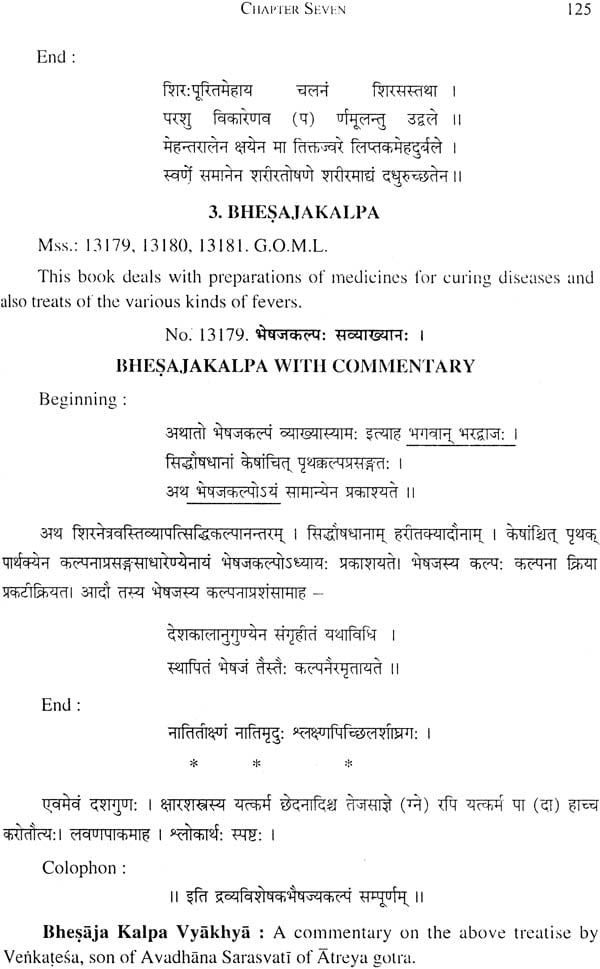
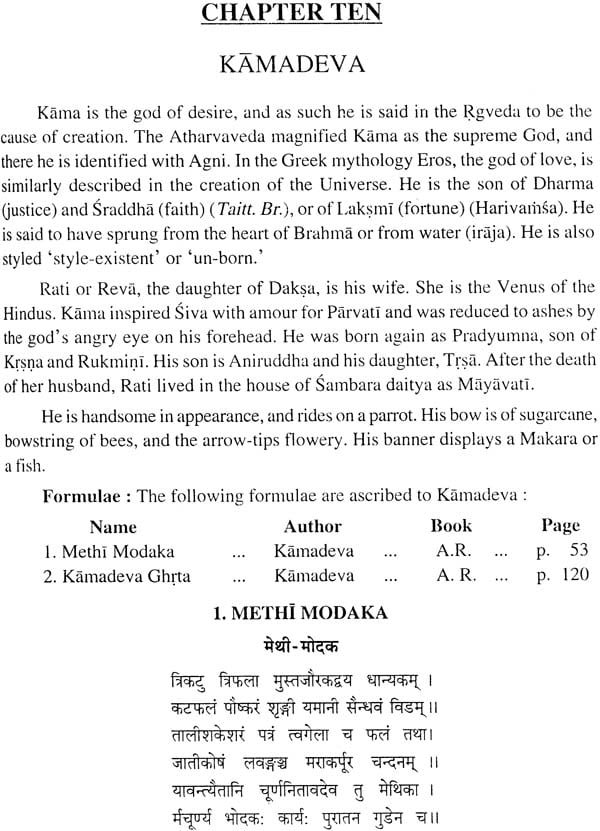
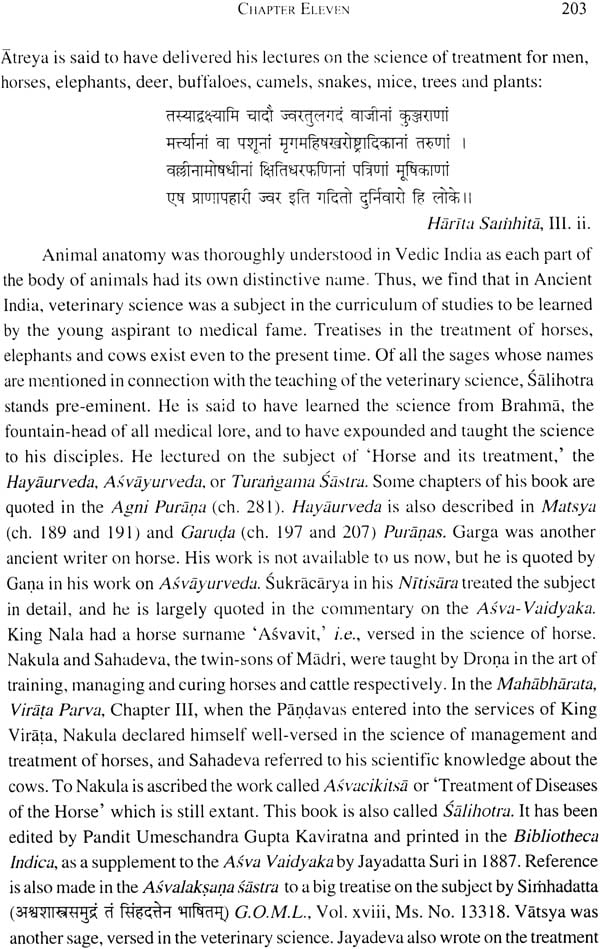
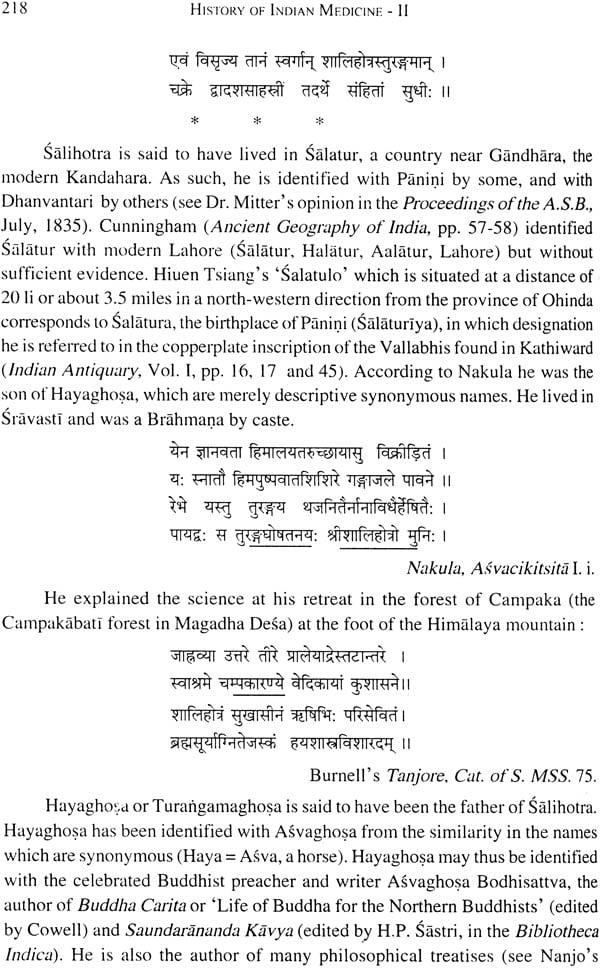
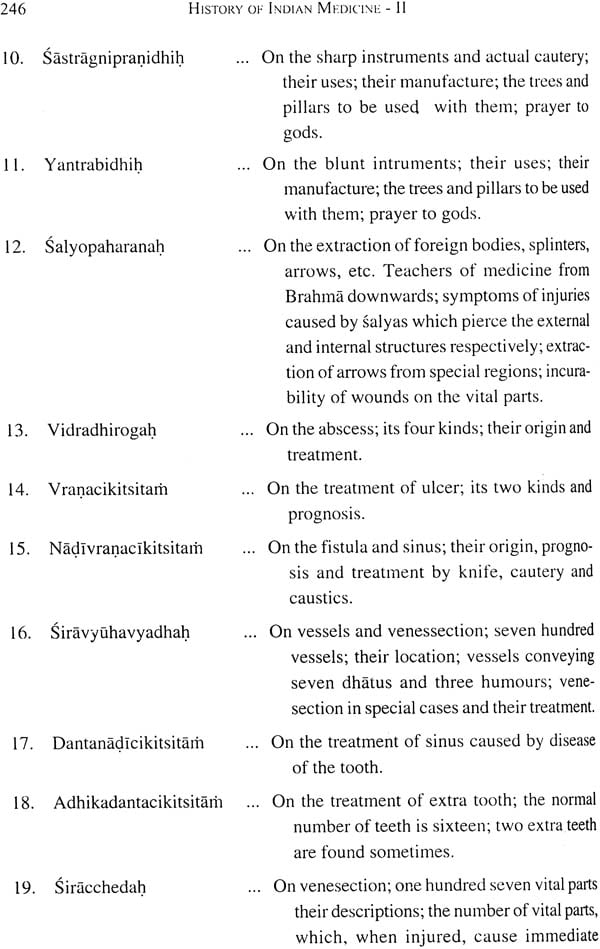
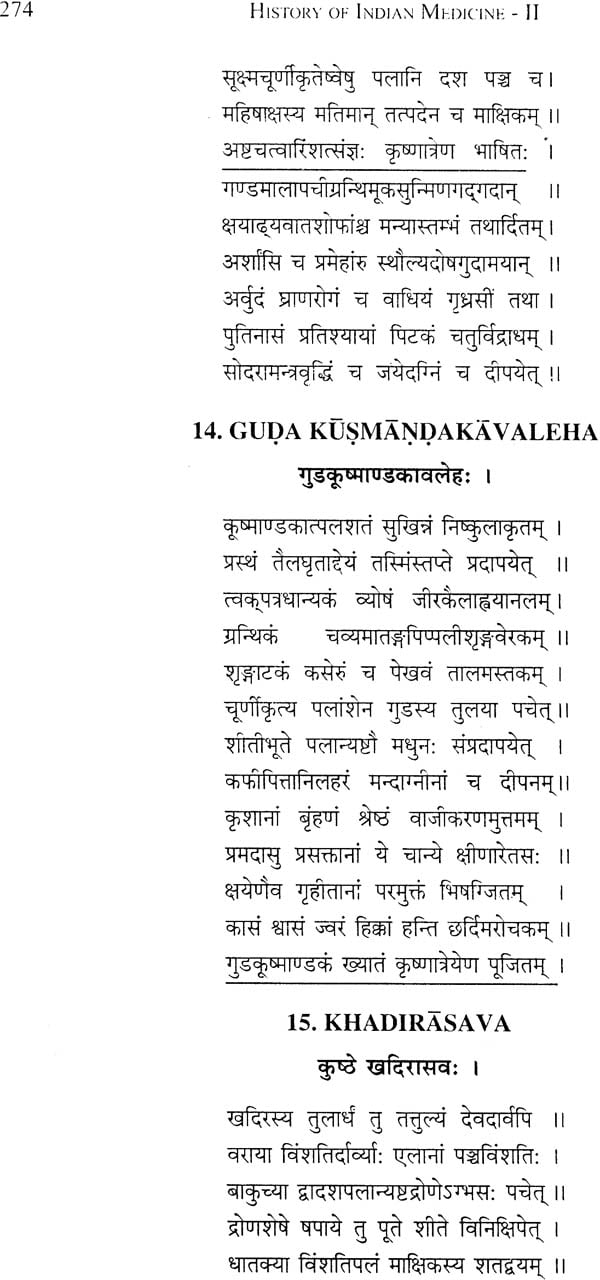
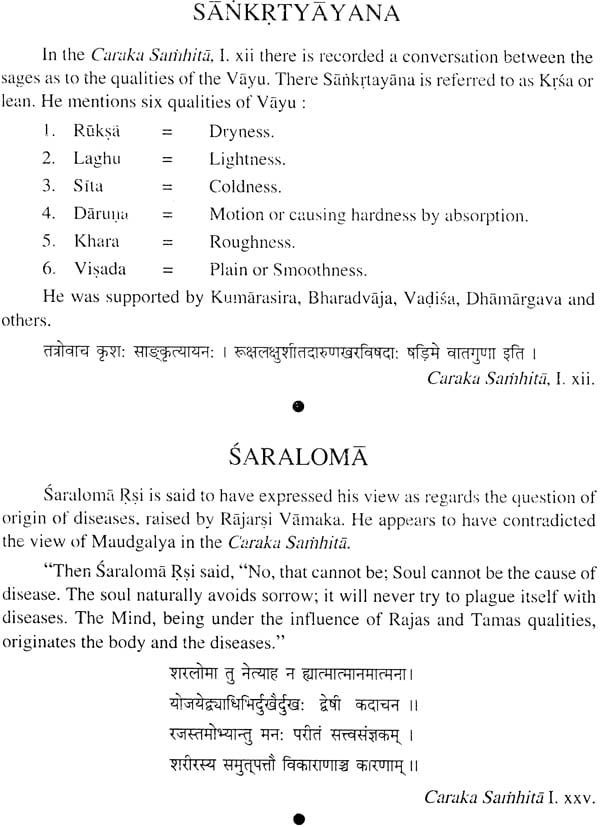
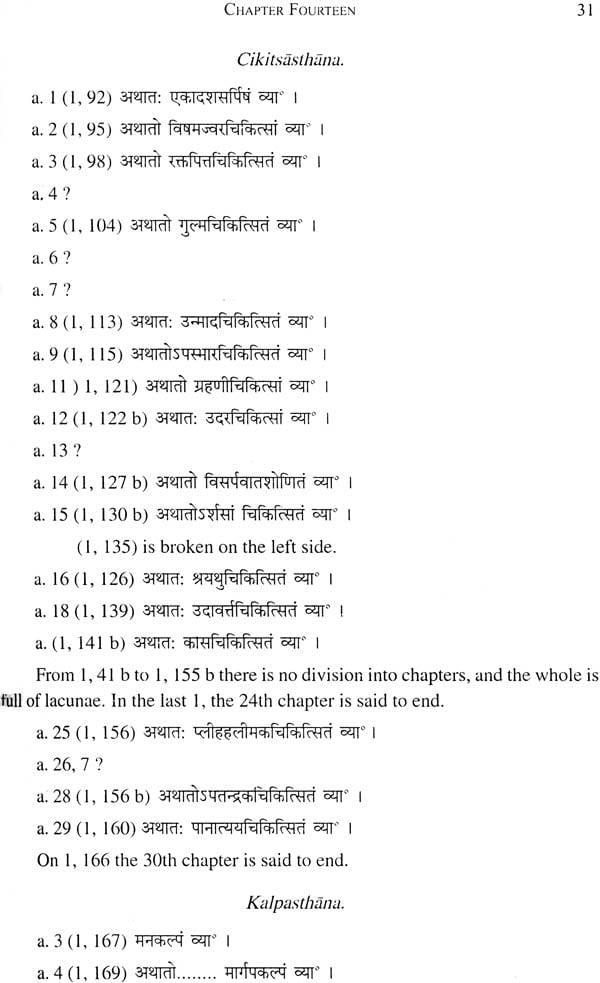
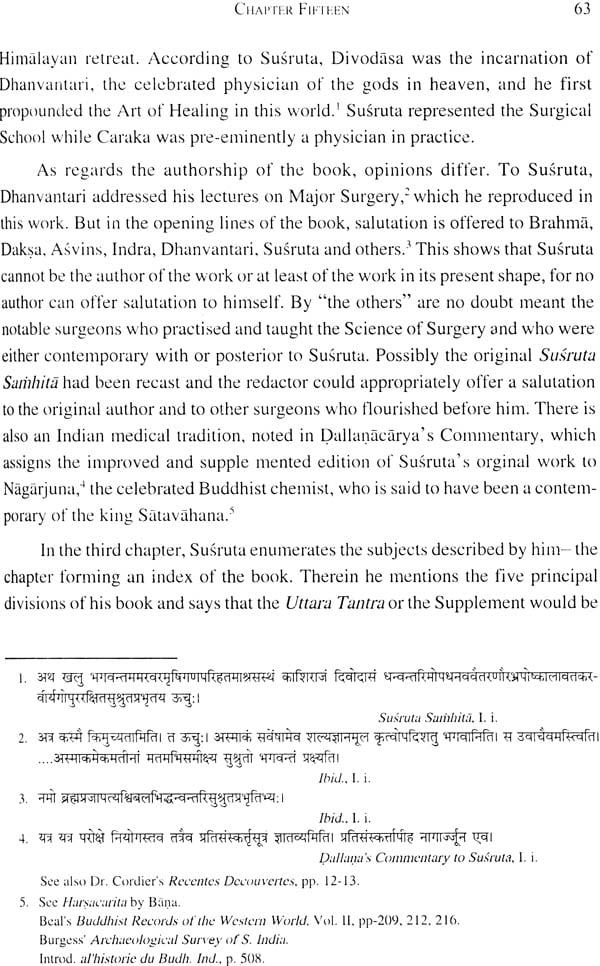
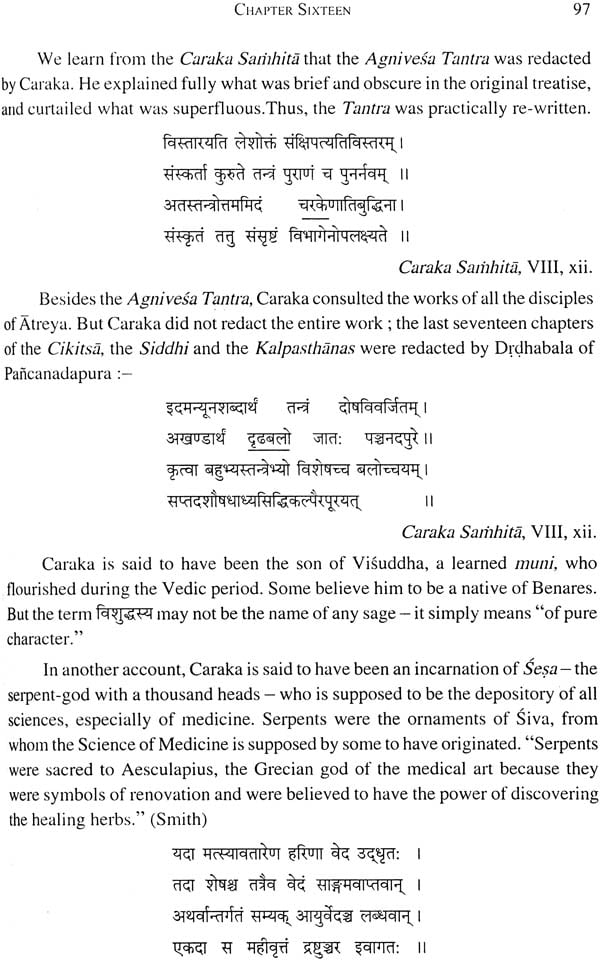
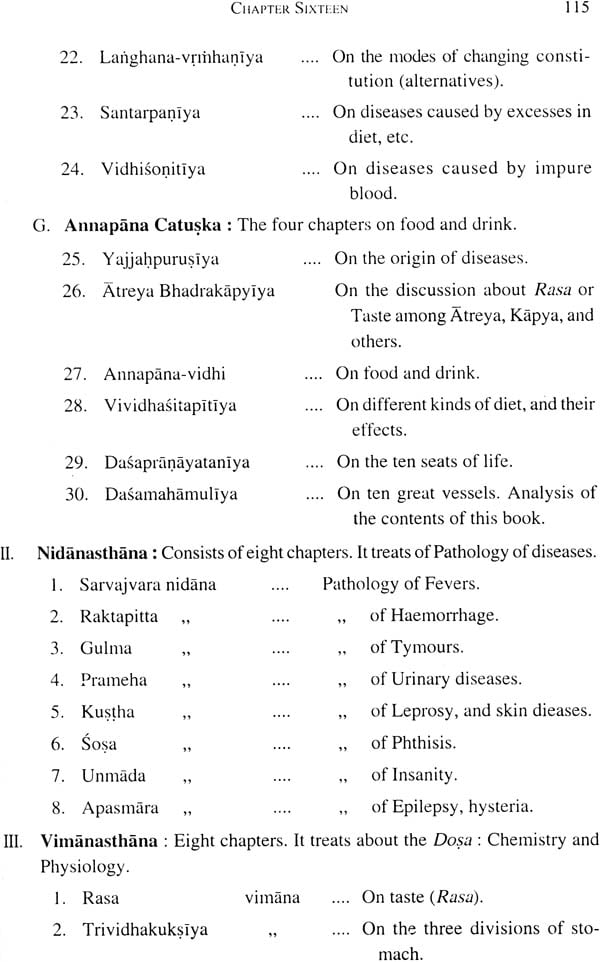
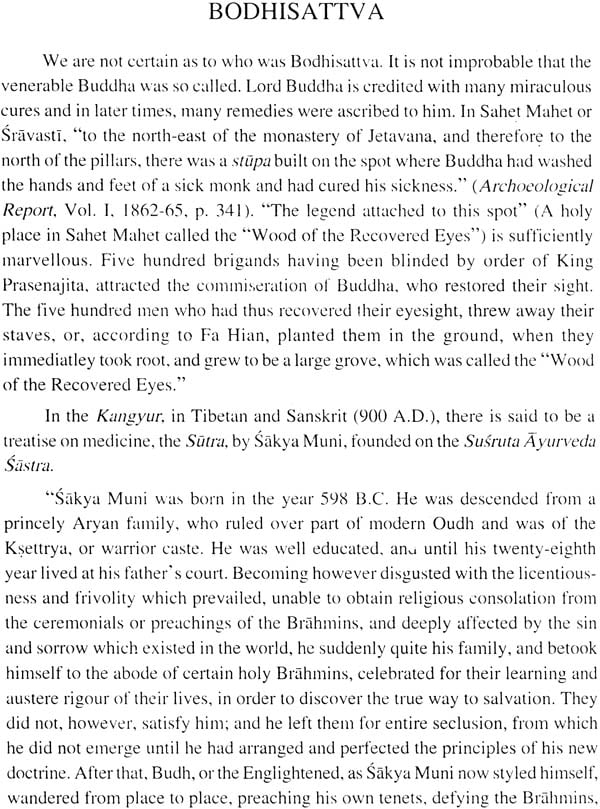
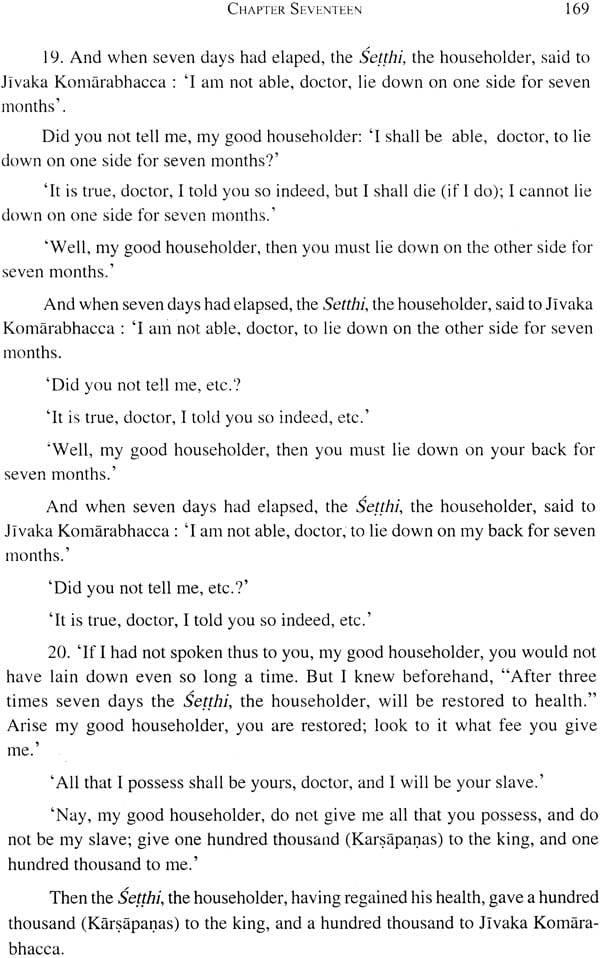
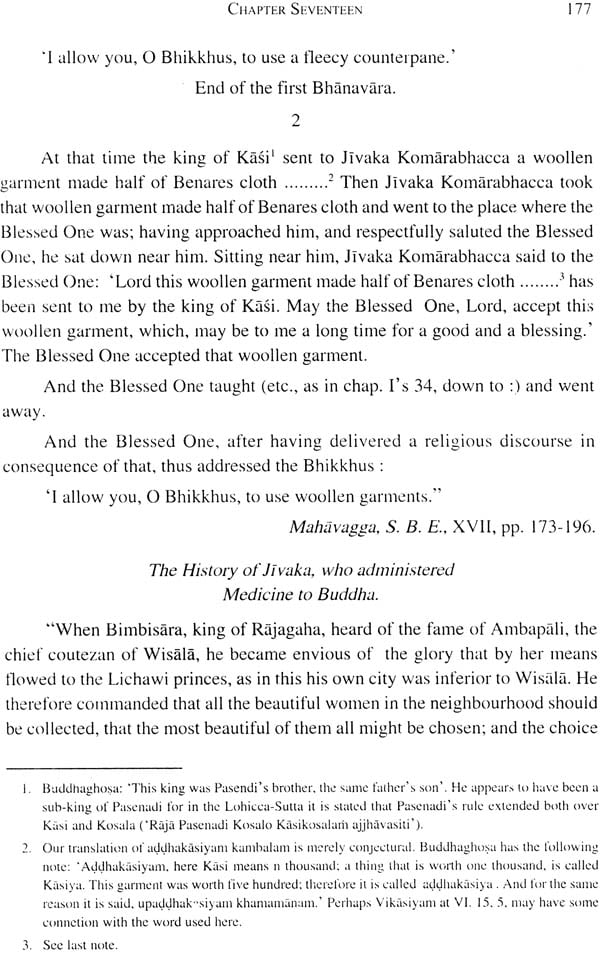
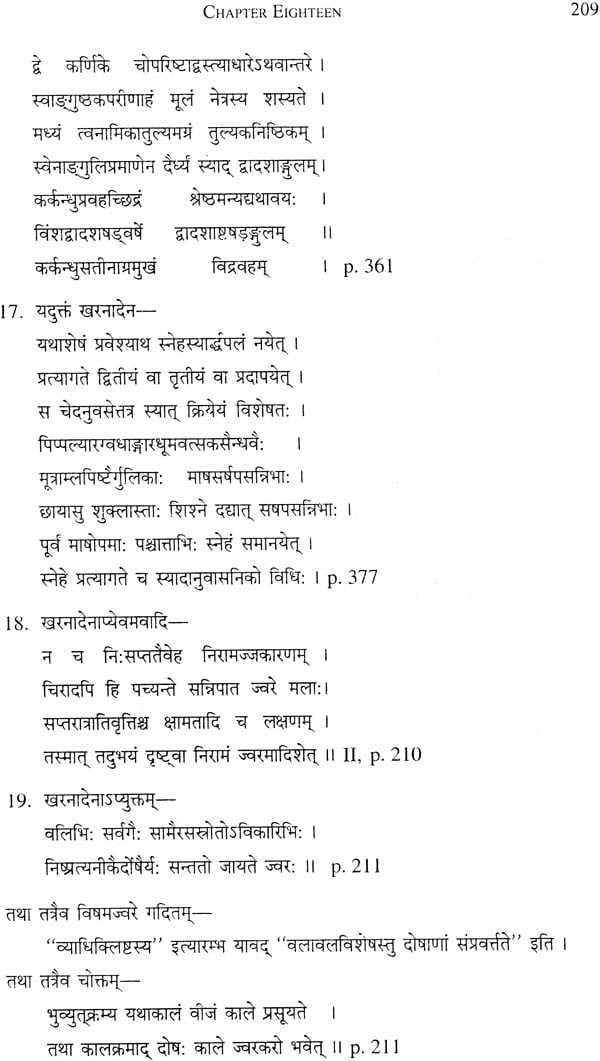
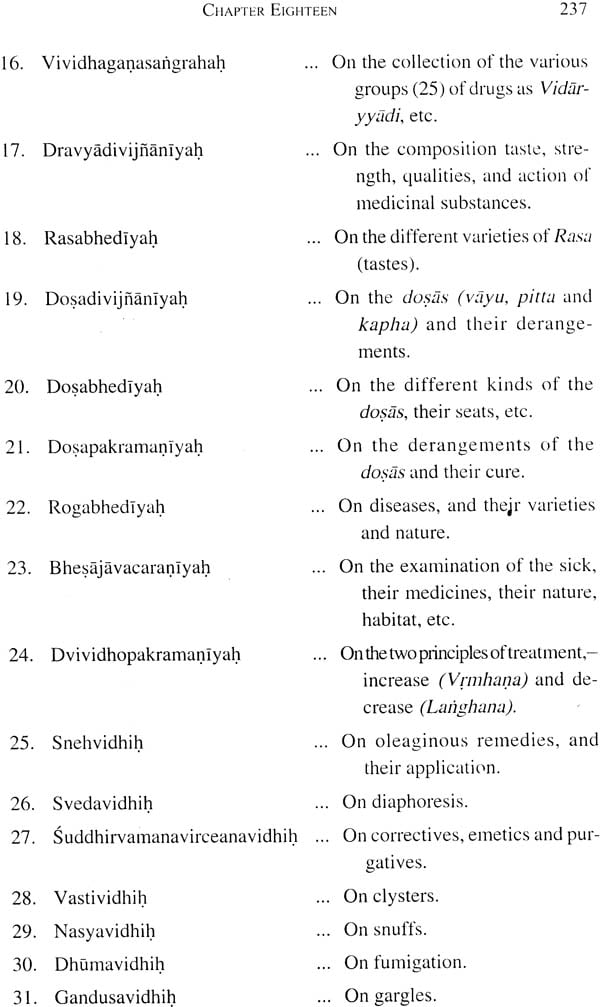
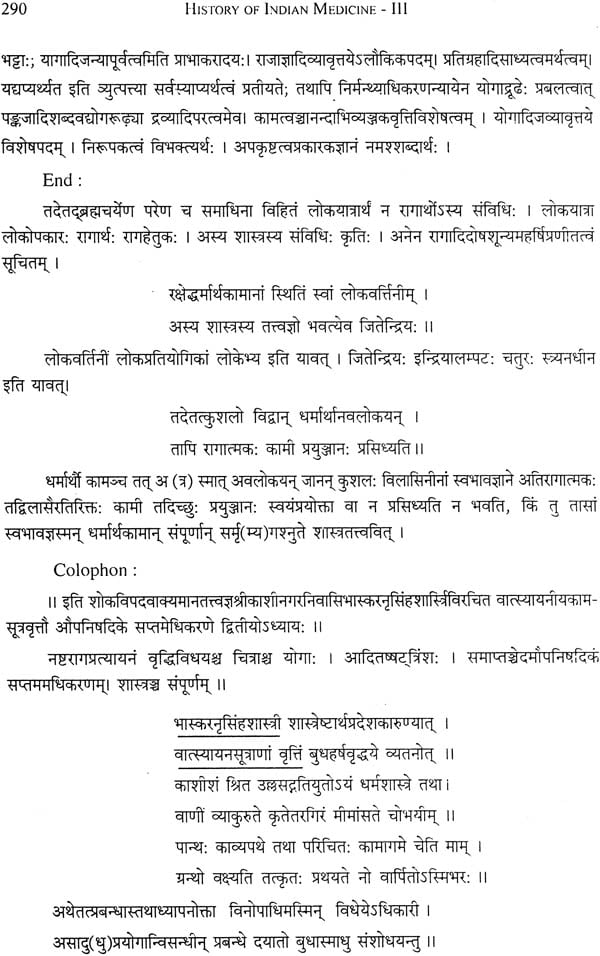
Send equally gratuitous online greeting card

Source: https://www.exoticindiaart.com/book/details/history-of-indian-medicine-three-volumes-idg233/
